Abrau-Durso: a village erected by a warrior, a wine that has become a symbol. Part of 2
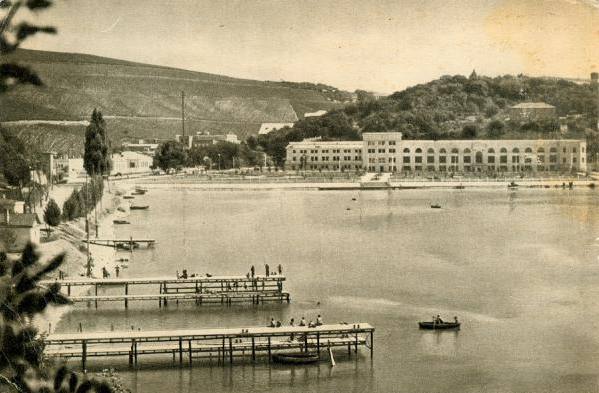
Already post-war Abrau-Durso overlooking the factory building
It is also worth mentioning that in 1920, Anastas Mikoyan signed an order on the formation of a stock of vintage and collection wines. These wines also lay in the cellars-tunnels of Abrau. And everything that was created by Russian wine-makers in blood and sweat was to go to the Fritz. Moreover, a collection of elite wines could become a powerful political weapons in the hands of the German "Goebbels".
The evacuation of cement plants and port equipment, which could not be taken away, was in full swing - destroyed. Naturally, there were no resources to take everything out, but there was also a factory of sparkling wines ... Straining all the efforts, the workers of the factory tried to take everything from equipment and documentation to already prepared wine and collection products. But the possibilities were sorely lacking. As a result, it was decided that part of the basements would be safely walled up so that the Nazis would not even have a thought, what is the true length of the Abrau tunnels.
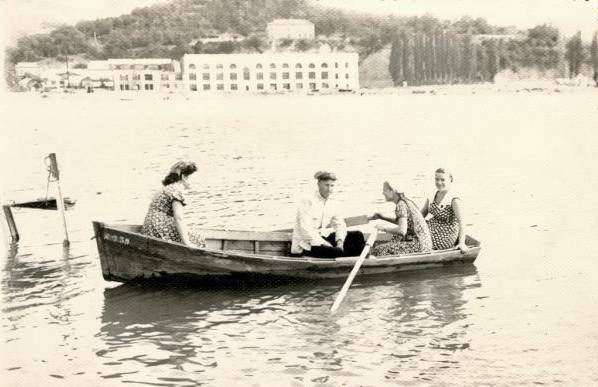
Soviet officer in the company of beautiful ladies on a pleasure boat
But this was not enough. And then, truly, shedding tears on the verge of a heart attack, the plant’s management decided to lower the remaining wine into the lake. Sailors and wine-makers took oak barrels (which are unique in themselves) with elite wines to the middle of the lake and dumped overboard with heavy pontoons. According to various sources, two hundred barrels went to the bottom.
Somewhere at the bottom to this day lie hundreds of wine barrels.
After the war, of course, attempts were made to lift the cargo, but without success. And soon the lake waters and forever covered the barrels with a thick layer of silt and as if absorbed themselves. Given the complex structure of the bottom and the still unexplained nature of Lake Abrau, we will never see those pre-war wine barrels.
The war continued. In the state farm "Abrau-Durso" settled the command post of the General of the Infantry Wilhelm Wettsel. True, the “delicate connoisseur” Wetzel already painted a picture of his personal estate on the beautiful shores of a mountain lake. By the way, it was in Abrau on the eve of the hardest 1943 battles of the year of the year that General von Greifenberg arrived at Wetzel to discuss the operation to eliminate the “Small Earth” bridgehead.
It was in this pacifying mountain landscape near the lake surface that the German generals worked out the plan for Operation Neptune. It is ironic that the collapse of this operation will bury both the hope of eliminating the “Little Earth” and entering the Sukhumskoye highway, and the dream of a cozy mansion on the bank of Abrau.
When it became clear even for the most fanatical “SS” that it was impossible to remain in Novorossiysk, “enlightened Europeans” and wine connoisseurs appreciated more than half a century of efforts by Russian wine-makers “to their merits”. Cellars threw grenades, and the vineyards tried to burn. Not reaching the elite and free drinks, the carriers of the “drinking culture” began to devastate the village. Most of the production infrastructure was destroyed, the Nazis did not leave without their attention even the mountain serpentine, connecting the village with Novorossiysk.
Immediately after the liberation of Abrau in the middle of September 1943, the active harvest of the surviving crop began. The workers opened the preserved basements, found there 1600 wine barrels. Immediately, presses for grapes were brought to the village, and wine production began in the dilapidated buildings. I think it is not worth talking about what a feat the state farm workers made in these hungry and terrible years. But it was necessary, by all means, to keep the brand ...
In 1955, the design was completed and the construction of the factory of champagne and table wines began. The infrastructure destroyed during the war, from the roads to the power lines, was also actively built. Then the final appearance of Abrau was formed, which reached us.
Unfortunately, now the Abrau-Durso plant headed for “Westernism” and “Glamor”. Here you will often hear the name of Dravigny, rather than the legendary scientist winemaker Frolov-Bagreev, the agronomist Heyduk or the founding general Pylenko. Apparently, this course is dictated by the oligarch Titov. Of course, the plant is developing, but at the same time, in pursuit of success, it loses that royal, and later Soviet statehood. Bohemian mediocrity is constantly being brought here, and relatively recently I was even “lucky enough” to meet Yeltsin Khakamada in Abrau with a Yeltsin singing and dancing.
The sight was surreal. Above the water surface of a mountain lake, a speech of a professional political outsider rushed full of liberal doctrine labels. The small public, as I later became aware, mostly stood in anticipation of the Leningrad group concert and did not understand very well why there was a political dispute here, and even with Khakamada.
All less remember the creator of the cult "Soviet champagne" Anton Frolov-Bagreev. Persons of the era go into the shadows, so to feel the true Abrau, then it is better to come in the winter, when the bohemians are busy with New Year’s “chez” or warming their silicone bodies behind the cordon. Only then can you feel the peace that so attracted General Pilenko - a career officer and winemaker.
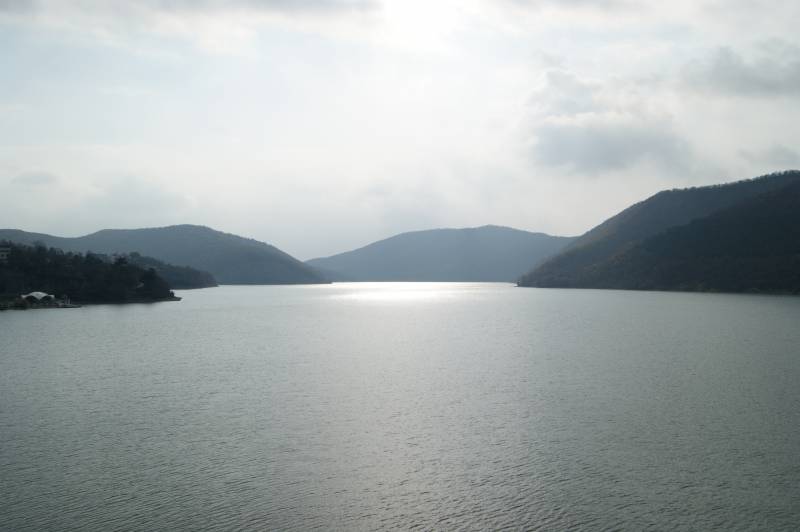
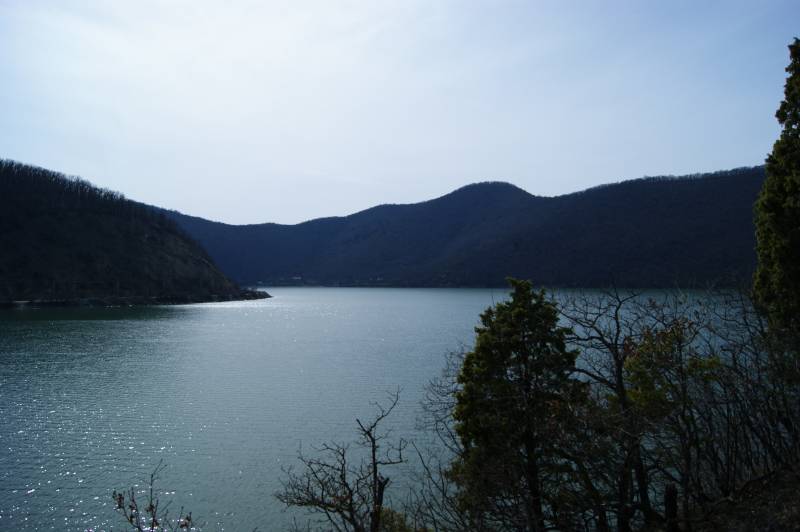
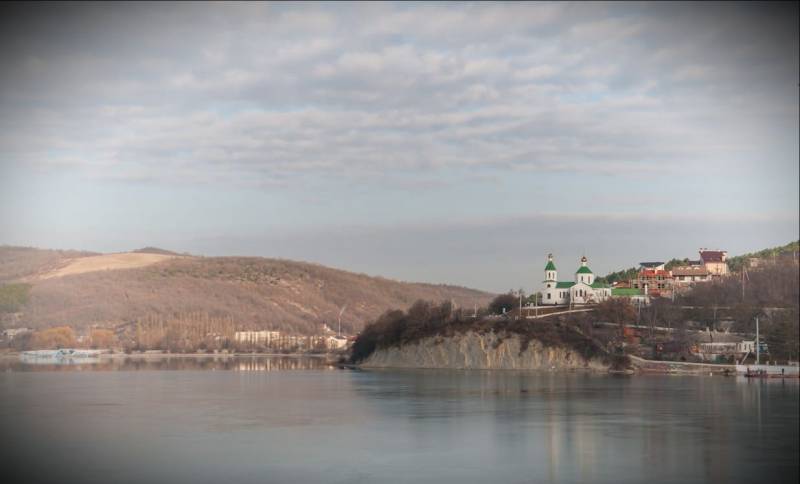
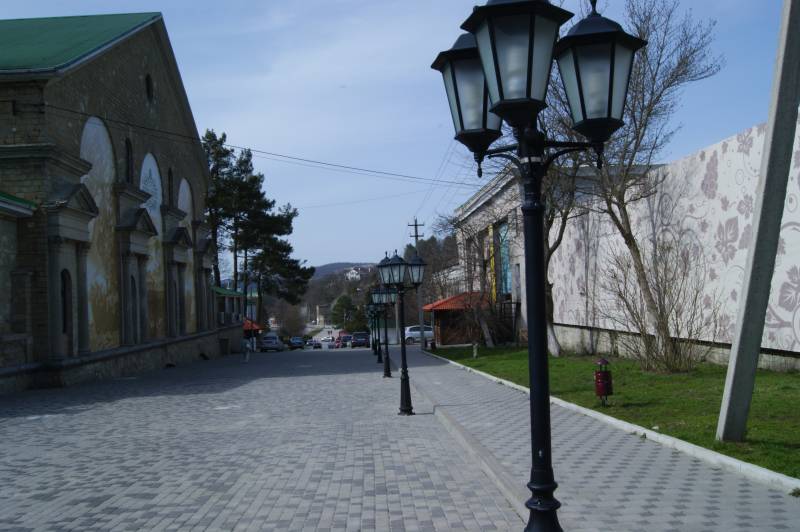
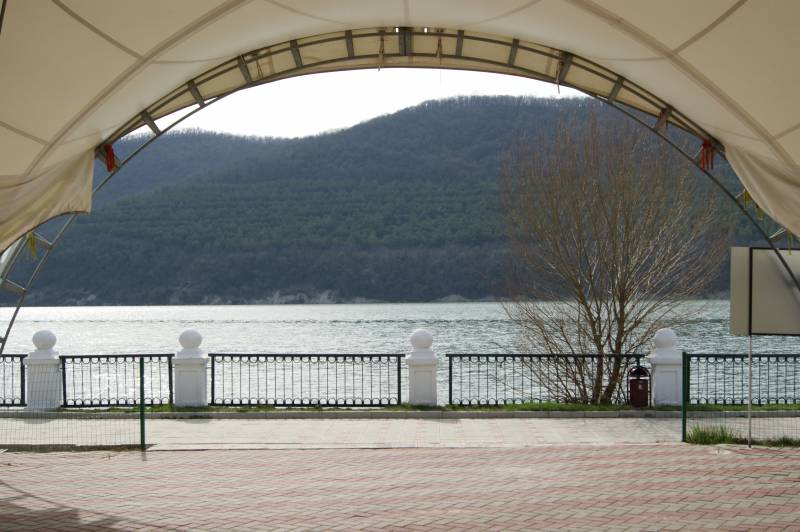
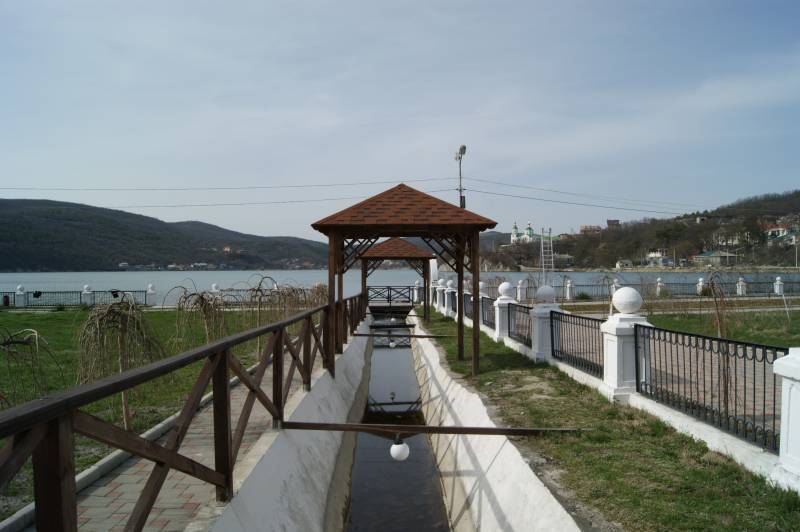
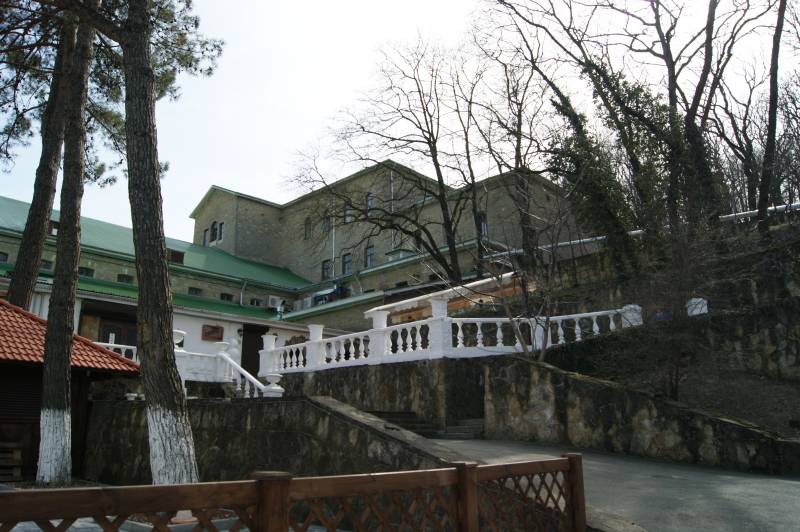
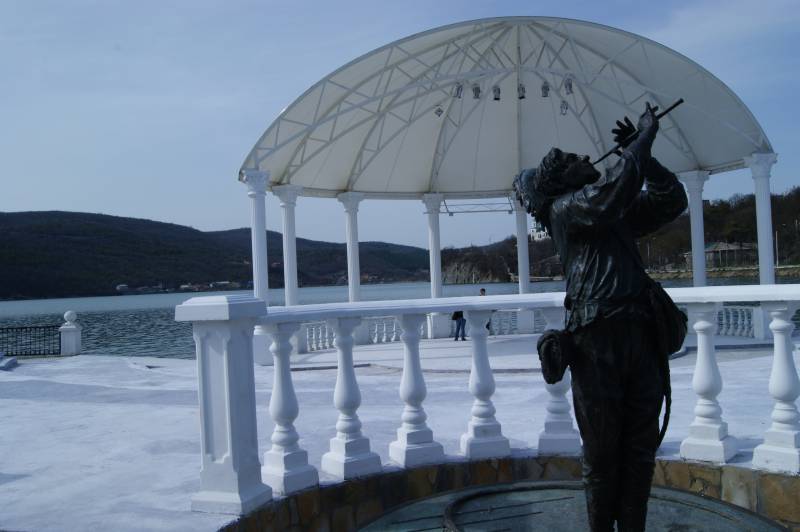
Information